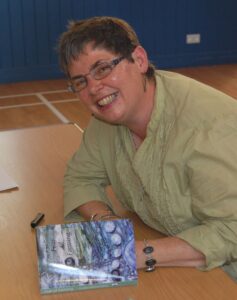
Archaeology is important to me. I just love it when it permeates everyday culture. It is a justification in my mind of its significance as an artefact, itself contributing to the way we live now. Continue reading Archaeology as Muse

Archaeology is important to me. I just love it when it permeates everyday culture. It is a justification in my mind of its significance as an artefact, itself contributing to the way we live now. Continue reading Archaeology as Muse

I much enjoyed the recent session on Archaeology and Fiction at TAG (the Theoretical Archaeology Group conference). Discussion was stimulated by a variety of papers from archaeological authors, illustrators, playwrights and poets – among others.
I attempted to look at the nature of truth in archaeological writing. I’m not the first to do this, it is an old conundrum that we rarely appreciate just how much imagination we use when we interpret the data that we are so highly trained to collect. And, of course, we can also question the objective nature of that data: the eye of the beholder and all that! I don’t think it does any harm to revisit this debate; it helps us to remain humble about the so-called academic wisdom that we all wish to produce.
It struck me how much our values have changed. As a profession I think we can be quite snobby about the ‘value’ of archaeological novels as opposed to archaeological textbooks. Yet I’d lay a wager that the novels reach a larger audience. One of the things I do for a living is to read the works of aspiring novelists and provide guidance on the archaeological settings and data that they use. Occasionally fellow archaeologists have been quite surprised at this, and yet, if we do not take the time to work with those who popularize the results of archaeology, then we certainly have no right to question their final output. Not everyone writes novels that I’d read out of choice, but everyone has an audience and everyone has the right to publish. The past is not for archaeologists to guard. If our academic texts are not immediately user friendly then we have a duty to help out.
It is interesting that in the past we gave status to storytellers, those who constructed stories to inform us about the world around us. In recent centuries this has lessened. We have diminished the didactic power of fiction and increased the distance between fiction and fact (look at the relative values of ‘academic’ papers and ‘popular’ writings in the recent REF evaluation of universities). It is salutary to realise that they used to be one and the same.
Academic narrative is no more factual just because it is academic than popular narrative is fictional just because it is popular. Archaeological fact is indeed the foundation of all interpretation whether academic or popular but it is what we do with it that matters. It is just the springboard for what must follow and without interpretation it is sterile. That interpretation is the job of the storyteller (for which read illustrator, game-maker, film producer and so on).
Excavation can give us a bowl. It can even give us traces of cornflakes. But it requires interpretation (and imagination) to combine them into breakfast. And even more imagination to communicate to others the significance of that breakfast to the people who ate it.
Whatever breakfasts your Yuletide rituals demand – I hope you have a merry time and a well-earned break over the next couple of weeks.
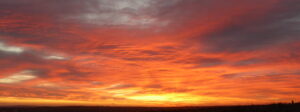
With the imminent arrival of TAG I have been thinking about Archaeological Fiction. Has anyone else been enjoying The Last Kingdom on BBC Two? A friend described it as a guilty pleasure. There is no reason why the pleasure of watching TV should be guilty, but I think there is a bit more to The Last Kingdom than mindless relaxation. I’m sure it is full of horrible anachronisms, but it raises some interesting points. The details are more nuanced in the books, but that does not mean that the television series is not worth watching.
First of all there is the depiction of two competing groups living in a single landscape. How do you tell people apart? How do they use the landscape? How do different languages and religions work? How do groups view one another? Secondly there is the depiction of the Christian church struggling to establish and maintain its place within Saxon society. This raises all sorts of questions relating to new influences and new ways: the role of women; education; medicine; food; religion and politics; and religion and language – all of these come into the story. Thirdly, there is the sheer level of violence in the world: how did one maintain economic stability when passing horsemen might burn your farmstead and kill your folks on a frequent basis; how does it affect people to live in a world where extreme violence is commonplace?
Obviously, this is a period about which I know very little – certainly not enough to pronounce on the accuracy of the depiction. But for me the interest lies not so much in the details as in the questions. You could regard it as science fiction, although the details are subtler than in Star Wars many of the questions are the same. It has got me thinking. For me it is a reminder that the stability and unity that we seek so urgently today have always been elusive. It turns my mind to the end of Mesolithic Britain, another great time of clashing cultures. What was it like to live then? Was it violent as some people suggest? There have been so many periods when the landscape of Britain was home to differing and distinctive peoples. Are we unique today in seeking a cosy homeland where all agree?
Finally, I do return to the detail. How on earth did the programme makers manage to find an actor who looked so like the Alfred Jewell?
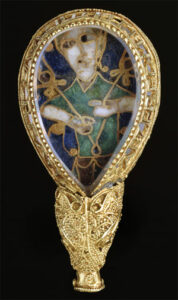
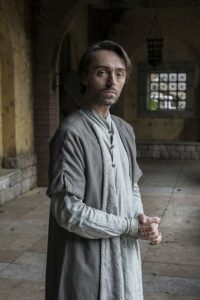
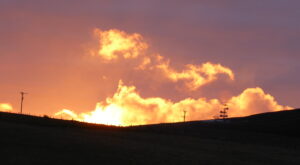
Is anyone else looking forward to the BBC Two series: The Last Kingdom? I am. Not just because it is a cracking story, but also because of the way in which visual media can be used to interpret the past.
One problem with archaeology is that it tends to be monochrome: the colour and noise of the past are often missing. This applies especially to the Mesolithic. Fiction, through the written word and other media, can help to remedy this. It is not without drawbacks though. How much research should authors do? What is the place of ‘truth’. How, exactly, should we use it? Is it ‘academic’ – we can spark public discussion, but does it have a role as an undergraduate exercise? This is something that is to be explored at TAG in Bradford this December and I am very much looking forward to taking part in that session.
Given certain caveats regarding the accuracy of the portrayal I’m all for the use of fiction in archaeology. In fact I’d argue that most archaeological publication is fiction anyway: we can never know precisely what went on in the past. Indeed, approaching the past as fiction in the sense of the written word forces archaeologists to confront some of the gaps that they prefer to gloss over. Excavation of a prehistoric site will rarely tell us what people had for breakfast, yet if we are to interpret the past fully we need to think about things like that.
Of course, with The Last Kingdom we move into the realm of history and you could argue that we have no need to resort to recent fiction here because the Vikings produced their own stories, the Sagas, which provide a detailed and colourful portrayal of their times (setting aside debates over the veracity of the Sagas). I know that ITV are to present the Old English poem Beowulf in the Spring, but I’d like to suggest the Orkneyinga Saga for future consideration. It is an action-packed story with some feisty characters (women and men) and the locations would be magnificent.
You must be logged in to post a comment.